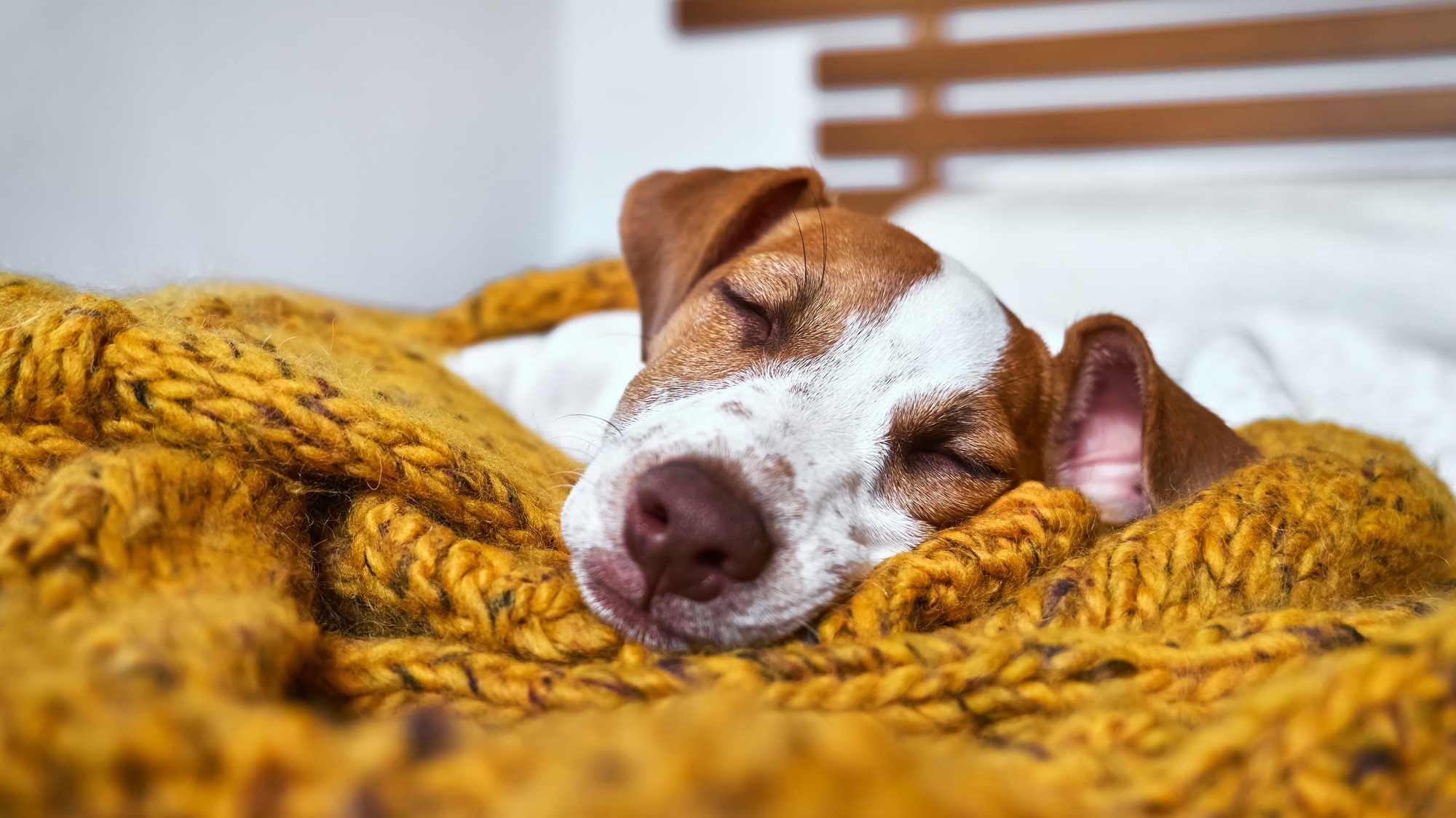Snoozing dogs twitch, woof, and flop in their sleep. But what’s going on inside their brains?
Posted on Jun 1, 2024 8:03 AM EDT

What do dogs dream about? Walks? Table food? A good belly scratch? DepositPhotos
My foster dog, Darla, a gastrointestinally challenged pit bull, twitches in her sleep. I assume she dreams of squirrels, which she chases mercilessly while awake. I may be right.
Research shows that dogs almost certainly dream. Any doubt comes from the fact that they can’t use language to communicate their experiences and confirm, yes, they had a nightmare about the vacuum cleaner last night.
“There will never be a silver bullet [that proves dogs, or any animal, dreams],” said David M. Peña-Guzmán, a professor of the philosophy of science at San Francisco State University and author of When Animals Dream: The Hidden World of Animal Consciousness.
“It’s not about finding that one piece of evidence that will make or break the case for animal dreaming,” he said. “It’s rather about analyzing a complex web of evidentiary support.”
A cursory YouTube search confirms dogs twitch, kick, and do plenty of adorable things in their sleep. None of that proves they’re dreaming. But their brain activity highly suggests it.
Like humans, dogs enter rapid eye movement (REM) sleep, when their brain activity looks very similar to when they’re awake. That’s when people dream. It’s likely the same for dogs.
In fact, when it comes to sleep, the two species are so similar that a study in Scientific Reports concluded we could learn about human sleep by studying the brain activity of snoozing dogs.
What Do Dogs Dream About?
Probably what they deal with in their waking life. In his book, Peña-Guzmán cited the research of primatologist Kimberly Mukabee, who observed sleeping chimpanzees using ASL to sign for coffee, a treat they’d tasted while awake.
In the 1960s, neuroscientist Michel Jouvet studied cats with damage to the pons, the part of the brain stem responsible for muscle atonia, which prevents animals from moving during REM sleep. While technically asleep, they leapt and clawed, a strong sign that they were dreaming of exactly what you might expect: chasing prey.
Dogs have shown similar behavior, according to the book Do Dogs Dream? Nearly Everything Your Dog Wants You to Know, written by Stanley Coren, a psychology professor who studies dog behavior. And research has shown rats display the same brain activity in REM sleep as they do while running through mazes.
While we might be able to infer what dogs dream about based on their waking obsessions (fallen pieces of steak, playing in the park, being pet by their humans, etc.), how they experience those dreams could be totally alien to us. Anyone who has patiently waited for their pup to inspect every tree and lamppost on their block knows that dogs largely experience the world through smell.
[Related: Do cats and dogs remember their past?]
A dog’s nose contains hundreds of millions of receptors compared to our roughly 6 million. Like snakes and cats, they have a vomeronasal organ that detects chemicals we can’t, like pheromones that indicate another dog is ready to mate.
Because they experience the world through their nose, it’s reasonable to assume smell informs how they experience dreams, said Peña-Guzmán. Unlike light, odors linger and waft. A family may leave the house, but to the dog, they’re still present in the form of their distinctive smell. Your pooch also maps physical space by odor. That vastly different relationship to time and space could result in dreams we can barely imagine.
We may never know exactly what dogs dream about and what those dreams feel or look like. But, factoring in what we know about their emotions, social life, and memory, we can demarcate “the space of what is possible” in their dreams, he said.
Why It Matters That Dogs Dream
In Peña-Guzmán’s opinion, “as soon as you can reasonably attribute dreaming to a creature, then you automatically have to attribute consciousness” to it.
“Dreaming is an internal reality that is lived,” he said. “And that’s usually what we mean by consciousness. It’s something that an organism undergoes that reveals to it a certain kind of world.”
Scientists and philosophers can’t agree on a definition of human consciousness, let alone one for animals, so this isn’t a universal definition. Still, if we think of a dog as a conscious creature, as opposed to an eating and breeding machine with fur, that might affect its moral and legal standing in society.
In our laws and social mores, we treat dolphins and gorillas differently than chickens, partly because we see them as having richer inner lives. Viewing dogs as conscious animals might lead to more robust legal protections, including some that consider their mental wellbeing.
Issues of animal rights aside, viewing your dog as a conscious, dreaming animal could change your personal relationship with your pet. Peña-Guzmán has received messages from readers telling him the book “peeled a new layer of complexity” or “revealed a new kind of depth” to the pets they already loved.
“A couple of people said, ‘I now pass my time wondering what my dog or cat is dreaming about.’” That pause, Peña-Guzmán said, where you stop and consider the inner world of your dog, can be quite powerful and humbling.
“I think that wonder can be an ethical gesture on our part, because it introduces a moment of pause or hesitation in our relationship with animals that reminds us that they are their own subjects with their own lives, in which we are maybe an important part … but ultimately they are here not to help us or serve us,” he said. “They’re in this world to live out their own existence.”
>>> Read full article>>>
Copyright for syndicated content belongs to the linked Source : Popular Science – https://www.popsci.com/environment/do-dogs-dream/






























